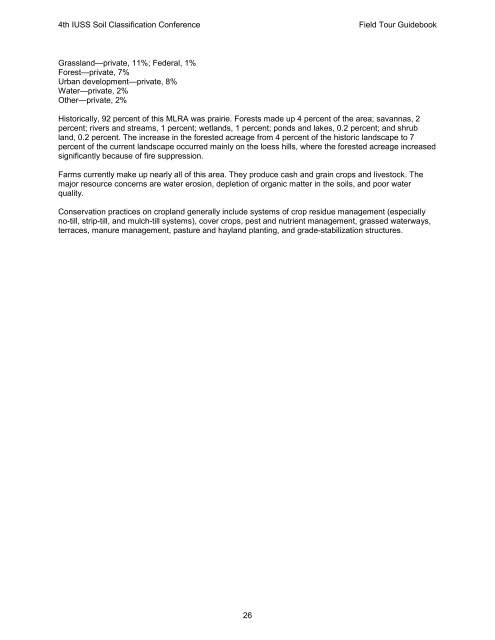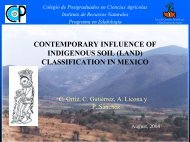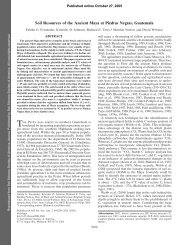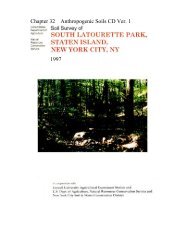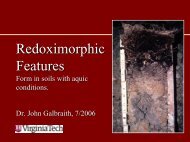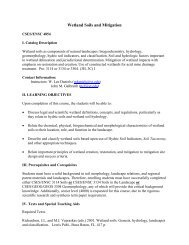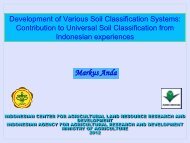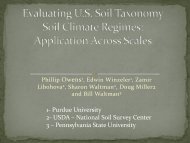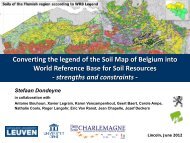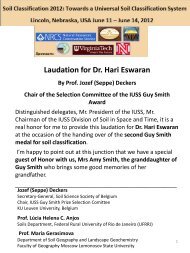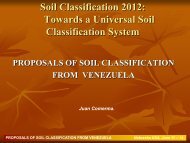Nebraska Soils Field Trip - Virginia Tech
Nebraska Soils Field Trip - Virginia Tech
Nebraska Soils Field Trip - Virginia Tech
You also want an ePaper? Increase the reach of your titles
YUMPU automatically turns print PDFs into web optimized ePapers that Google loves.
4th IUSS Soil Classification Conference <strong>Field</strong> Tour Guidebook<br />
Grassland—private, 11%; Federal, 1%<br />
Forest—private, 7%<br />
Urban development—private, 8%<br />
Water—private, 2%<br />
Other—private, 2%<br />
Historically, 92 percent of this MLRA was prairie. Forests made up 4 percent of the area; savannas, 2<br />
percent; rivers and streams, 1 percent; wetlands, 1 percent; ponds and lakes, 0.2 percent; and shrub<br />
land, 0.2 percent. The increase in the forested acreage from 4 percent of the historic landscape to 7<br />
percent of the current landscape occurred mainly on the loess hills, where the forested acreage increased<br />
significantly because of fire suppression.<br />
Farms currently make up nearly all of this area. They produce cash and grain crops and livestock. The<br />
major resource concerns are water erosion, depletion of organic matter in the soils, and poor water<br />
quality.<br />
Conservation practices on cropland generally include systems of crop residue management (especially<br />
no-till, strip-till, and mulch-till systems), cover crops, pest and nutrient management, grassed waterways,<br />
terraces, manure management, pasture and hayland planting, and grade-stabilization structures.<br />
26


